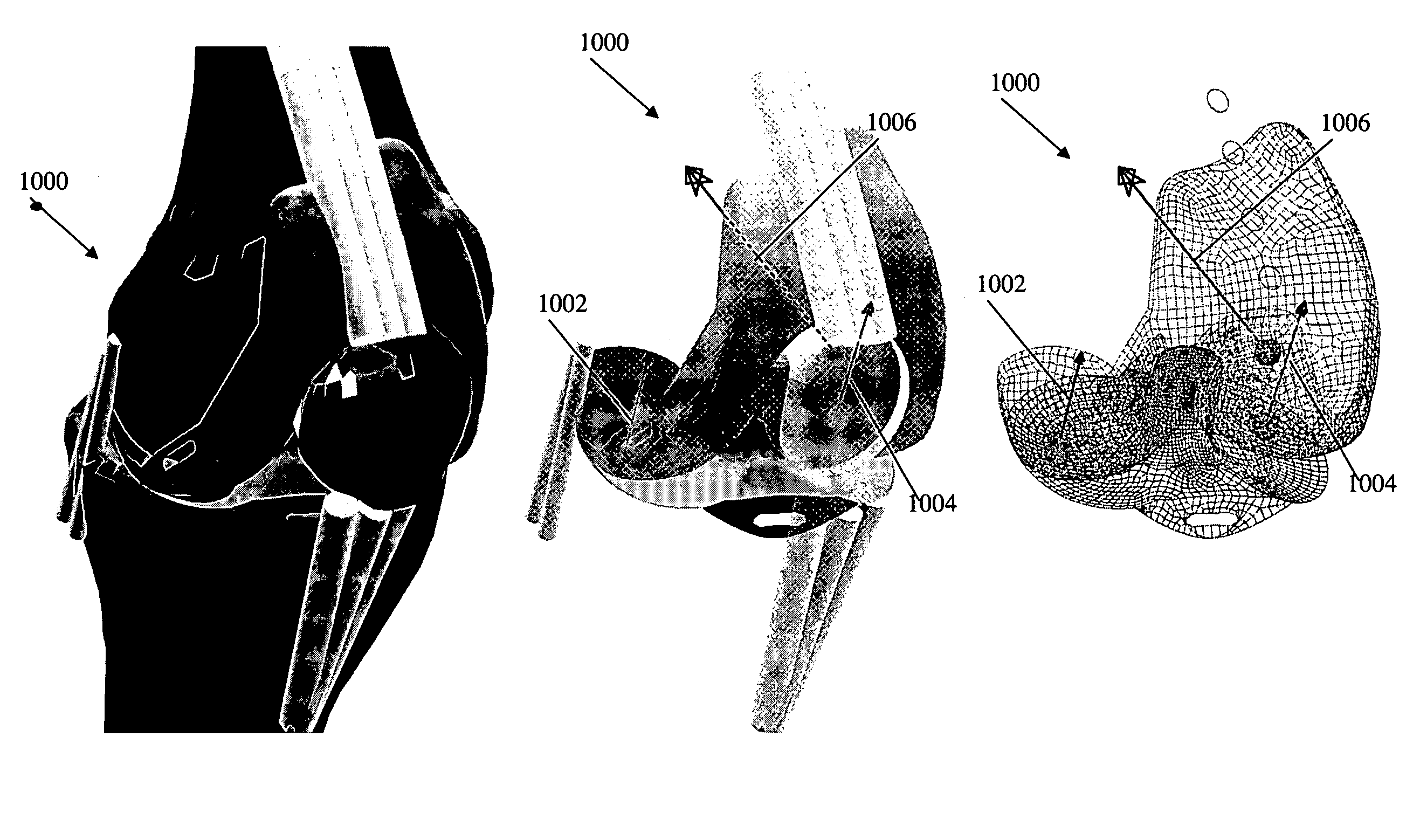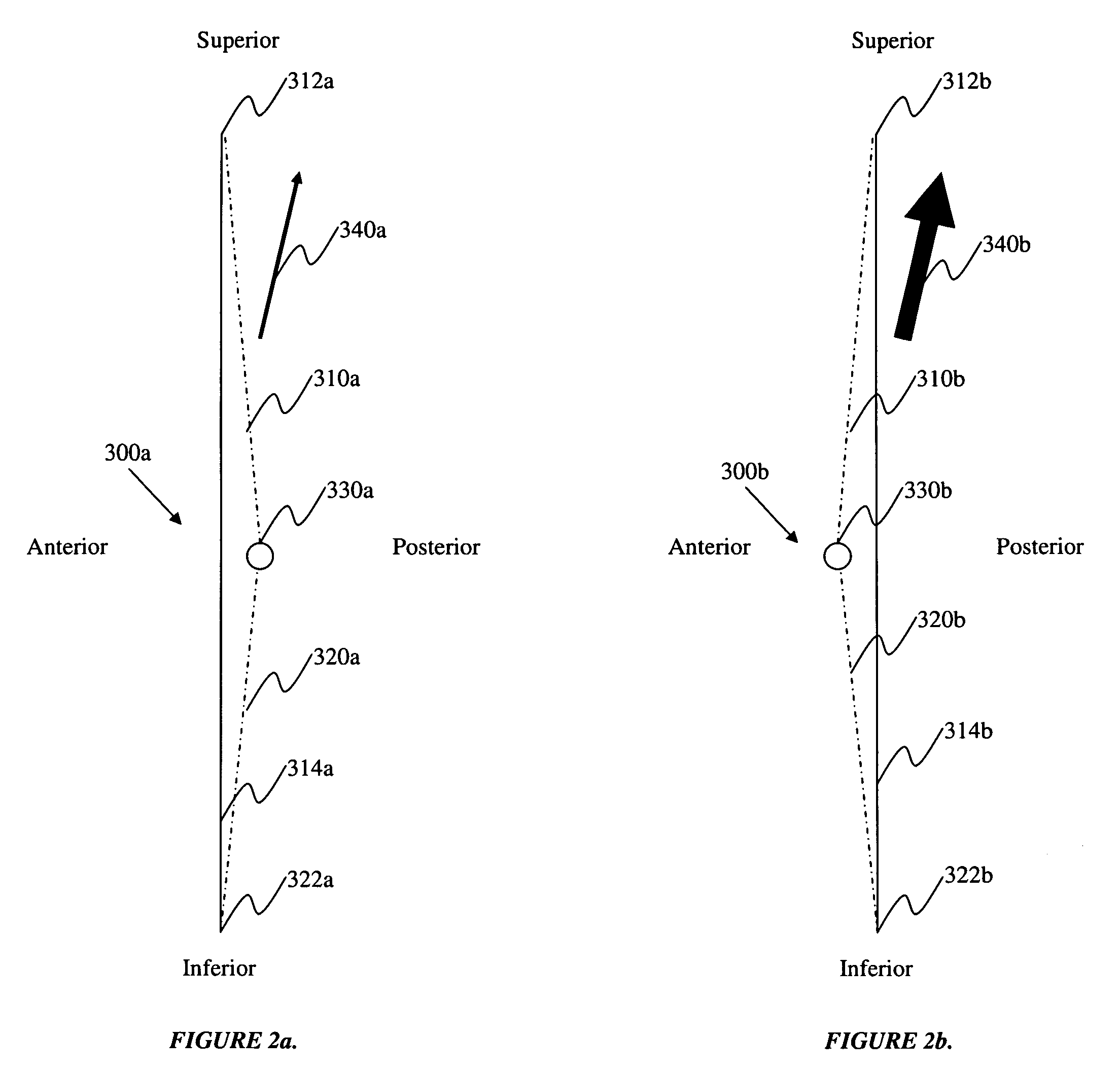Operatively tuning implants for increased performance
a technology for tuning implants and implants, applied in the field of optimizing implant positions, can solve the problems of poor post-operative patient outcomes, high probability of revision knee surgery due to pain or abnormal wear, and prior art software that fine-tunes the anatomical placement of implants, etc., and achieves good postoperative biomechanic function, good intra-operative ligament balance, and good anatomic fi
- Summary
- Abstract
- Description
- Claims
- Application Information
AI Technical Summary
Benefits of technology
Problems solved by technology
Method used
Image
Examples
examples
[0112]In a first example of the present invention, a candidate for knee surgery who enjoys running will be measured while performing several various activities with an emphasis on uphill, downhill, and level jogging. The candidate's functional characterization may be determined by performing said activities on a treadmill or inclined force plate while jogging in place. It may be determined through steps (110), (112), and (114) that said candidate generally tends to have more external rotation in full extension than is normal (i.e., the patient has an out-toeing abnormality). In this instance, iterative model simulation may be used to characterize and analyze the patient's jog on the computer with a virtually-implanted Smith & Nephew Legion™ Primary system. The simulation results might indicate that the tibial component should be positioned with slightly greater posterior slope than normal, so as to give the patient more postoperative AP stability (tibial drawer test), since this ori...
PUM
 Login to View More
Login to View More Abstract
Description
Claims
Application Information
 Login to View More
Login to View More - R&D
- Intellectual Property
- Life Sciences
- Materials
- Tech Scout
- Unparalleled Data Quality
- Higher Quality Content
- 60% Fewer Hallucinations
Browse by: Latest US Patents, China's latest patents, Technical Efficacy Thesaurus, Application Domain, Technology Topic, Popular Technical Reports.
© 2025 PatSnap. All rights reserved.Legal|Privacy policy|Modern Slavery Act Transparency Statement|Sitemap|About US| Contact US: help@patsnap.com



